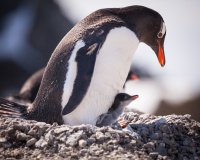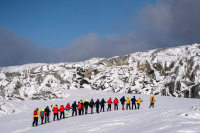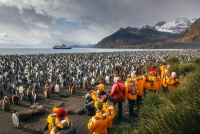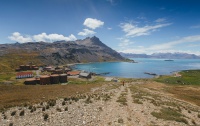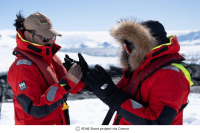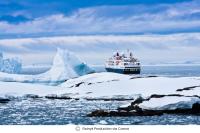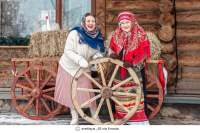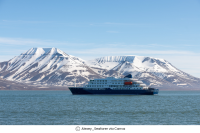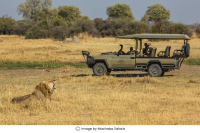-
Travel to Antarctica: A Penguin’s Journey Through the Antarctic Wilderness
Imagine a land where the sun never sets in summer and disappears entirely in winter. The wind howls fiercely, and the cold bites harder than anywhere else on Earth. This is Antarctica, a place as beautiful as it is unforgiving. Yet, in this icy wilderness, life thrives, particularly for one of its most iconic residents—the penguin.
But what does it take for a tiny penguin chick to grow into a hardy adult, ready to face the challenges of the Antarctic wilderness? Let’s embark on the fascinating journey of a penguin’s life, from chick to adult.
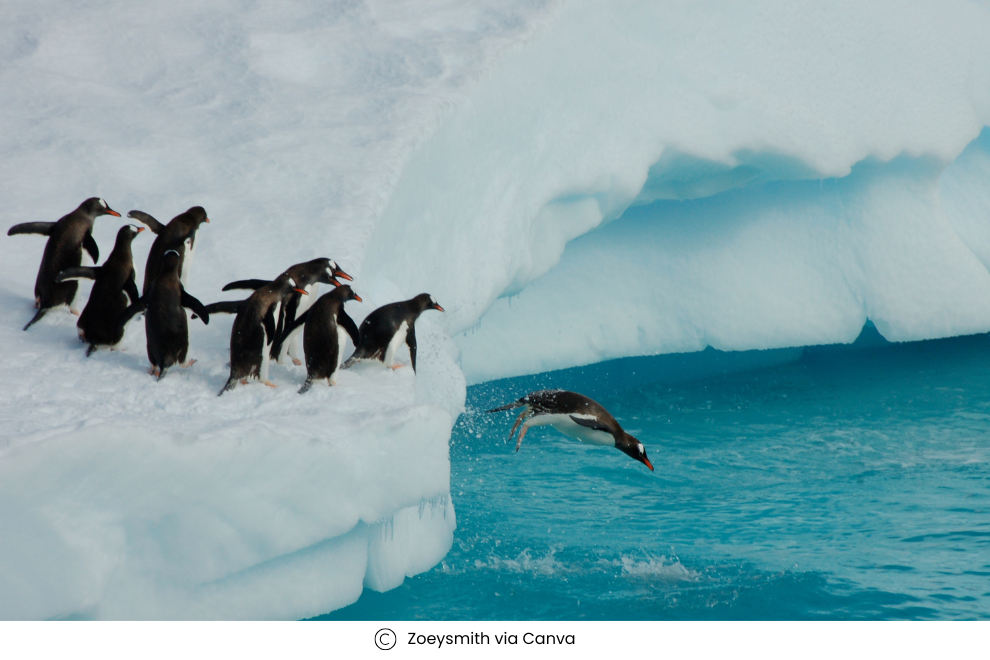
The Beginning: A Fragile Egg in a Frozen World
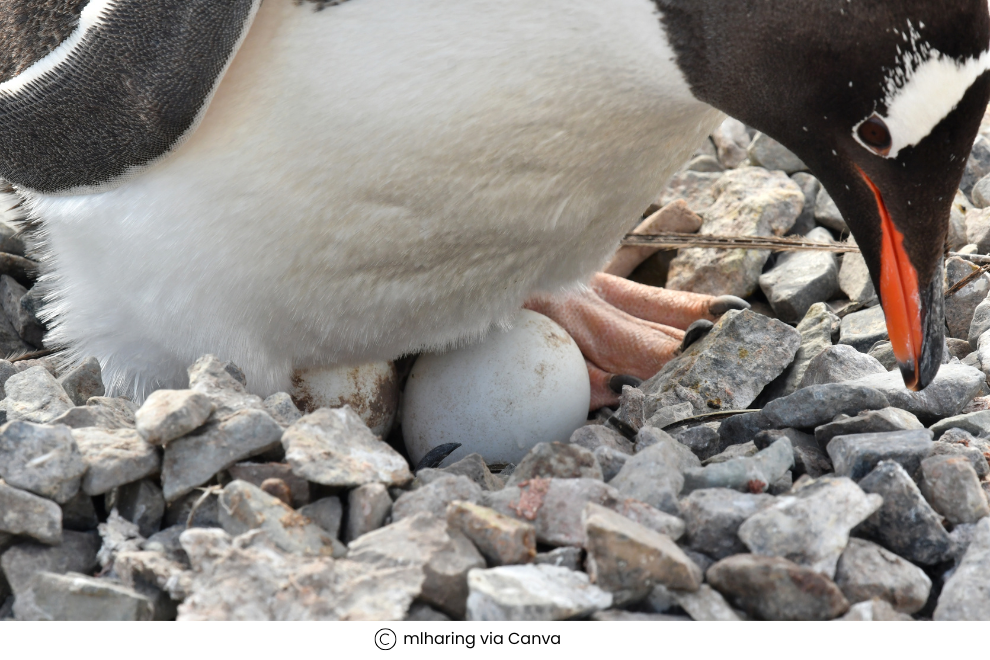
The journey begins long before the chick hatches. After a courtship dance that looks like a perfectly synchronized waddle, penguin parents work together to prepare for their future offspring. Once the female lays her egg, the responsibility of keeping it warm shifts primarily to the male. He cradles the egg on top of his feet, covered by a thick fold of skin called the brood pouch, while the mother heads out to sea to feed.
For weeks, the male penguin stands guard over the precious egg, enduring freezing temperatures and fierce blizzards. His steadfastness is remarkable, and his endurance is tested to the limit. Finally, after a long wait, a tiny crack appears in the egg, and a fluffy chick emerges, weak but ready to take on the world.
Early Days: Life as a Chick
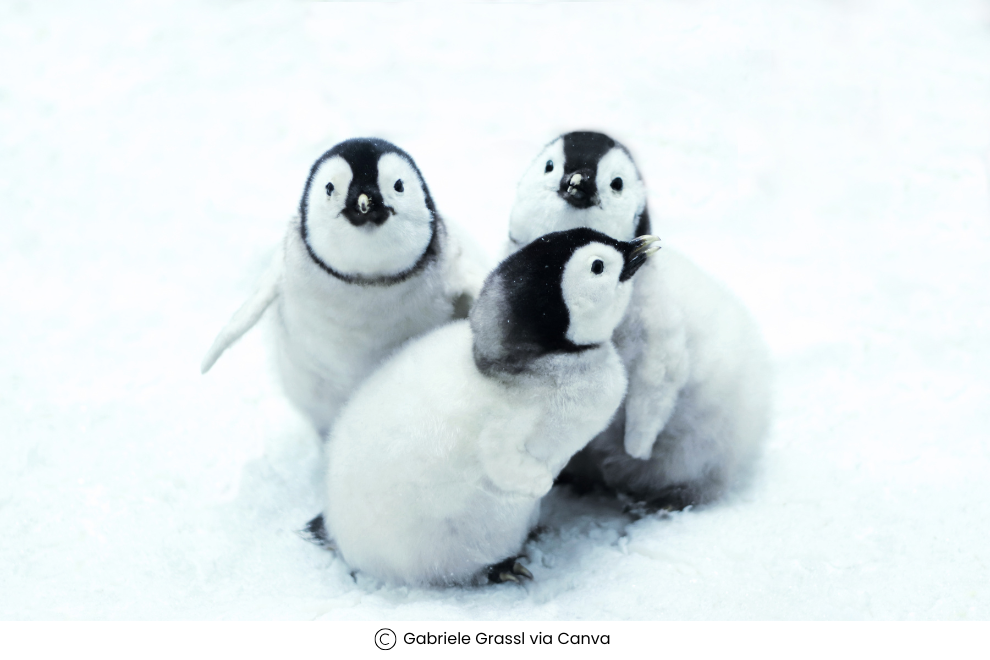
The first few weeks of a penguin chick’s life are crucial. Born with a coat of soft down feathers, the chick is incredibly vulnerable to the cold. But in the safety of its father’s brood pouch, it finds warmth and protection. The mother returns from the sea with a belly full of food, regurgitating it for the chick to eat—a somewhat messy but vital meal.
As the days go by, the chick grows stronger and hungrier. It begins to venture out of the brood pouch, exploring the icy landscape under the watchful eyes of its parents. But danger is never far away. Predators like skuas, large seabirds, circle overhead, looking for an easy meal. The chick learns quickly to stay close to the safety of the colony.
The Adolescent Stage: Growing Independence
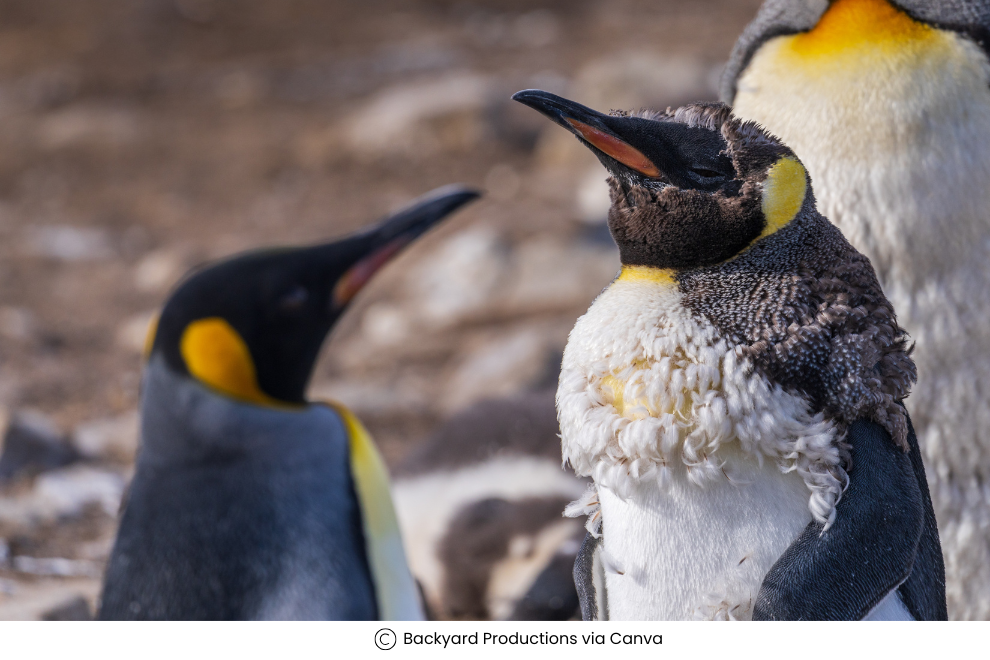
As the chick grows, it begins to shed its fluffy down and develop the sleek waterproof feathers that will allow it to swim in the frigid Antarctic waters. This transformation is both exciting and daunting. The chick joins a group of other young penguins in a "crèche," where they huddle together for warmth and protection while their parents are away hunting.
The adolescent stage is a time of learning and growth. The young penguin practices swimming in shallow waters, learning to catch small fish and avoid predators. It’s a period of trial and error, but each day brings the chick closer to becoming a self-sufficient adult.
The Final Step: A Penguin’s First Swim
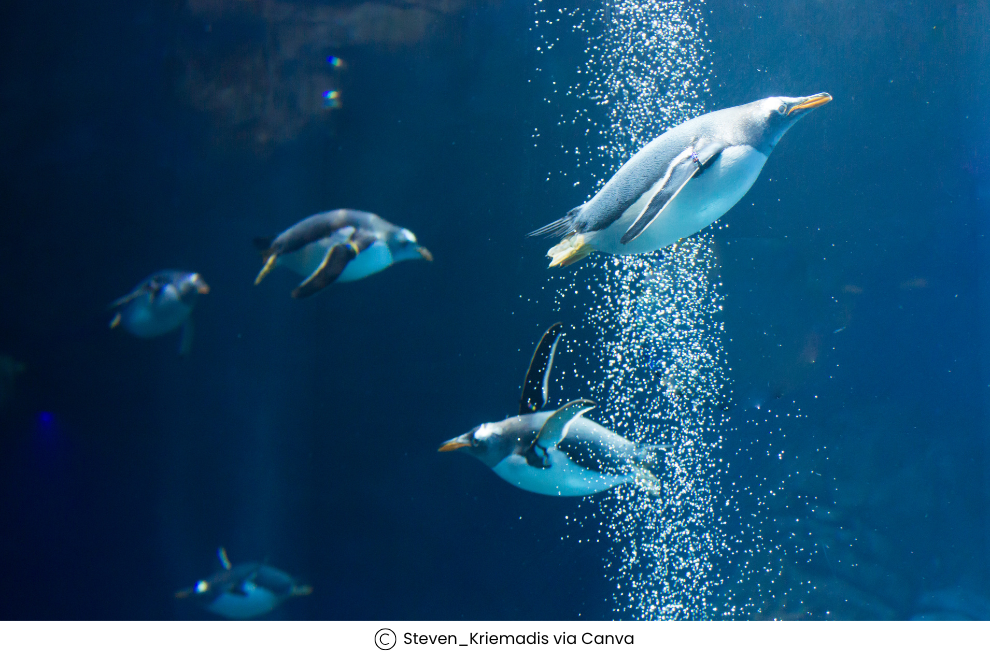
The most significant milestone in a penguin’s life is its first solo swim. With fully developed feathers and a strong, streamlined body, the young penguin is finally ready to take the plunge. It dives into the icy waters, instinctively knowing how to swim and hunt.
The ocean is vast and full of challenges—strong currents, hungry predators, and the need to find enough food to survive. But the young penguin is well-prepared. It swims with purpose, diving deep to catch fish and krill, gradually gaining the skills and confidence needed to thrive in this harsh environment.
Adulthood: The Cycle Continues
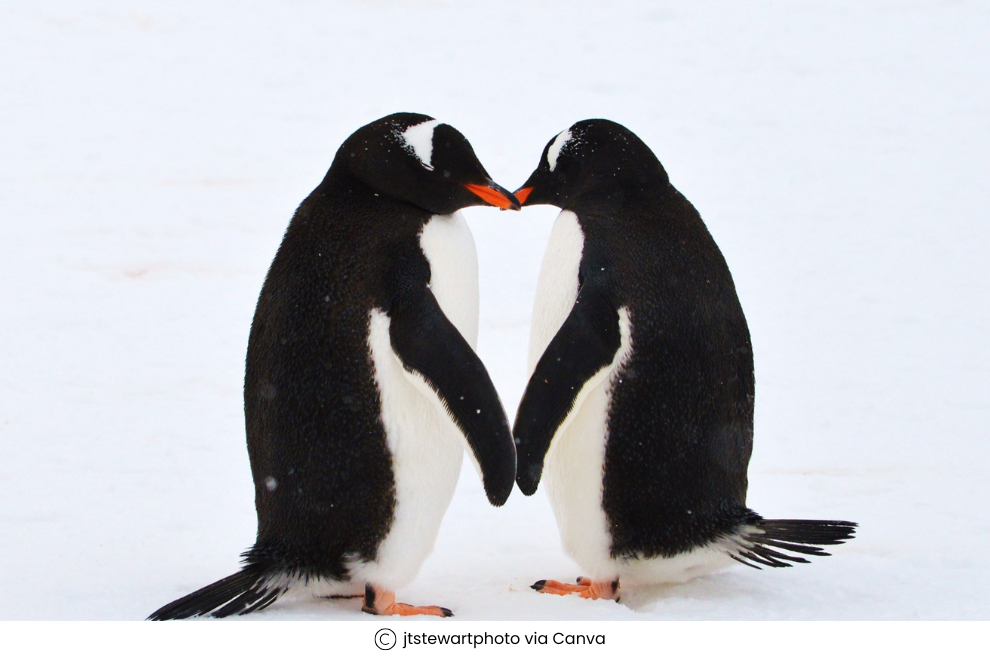
After months of learning and growing, the penguin reaches adulthood. It returns to the colony where it was born, ready to start a family of its own. The cycle continues, with new eggs laid, new chicks hatching, and the journey from chick to adult beginning anew.
In the heart of the Antarctic wilderness, penguins thrive despite the extreme conditions. Their journey from chick to adult is a testament to the resilience and adaptability of these incredible birds. It’s a story of survival, growth, and the unbreakable bond between parent and child—a journey that, year after year, brings new life to one of the most challenging places on Earth.
Places to visit in Antarctica- exclusively to spot penguins
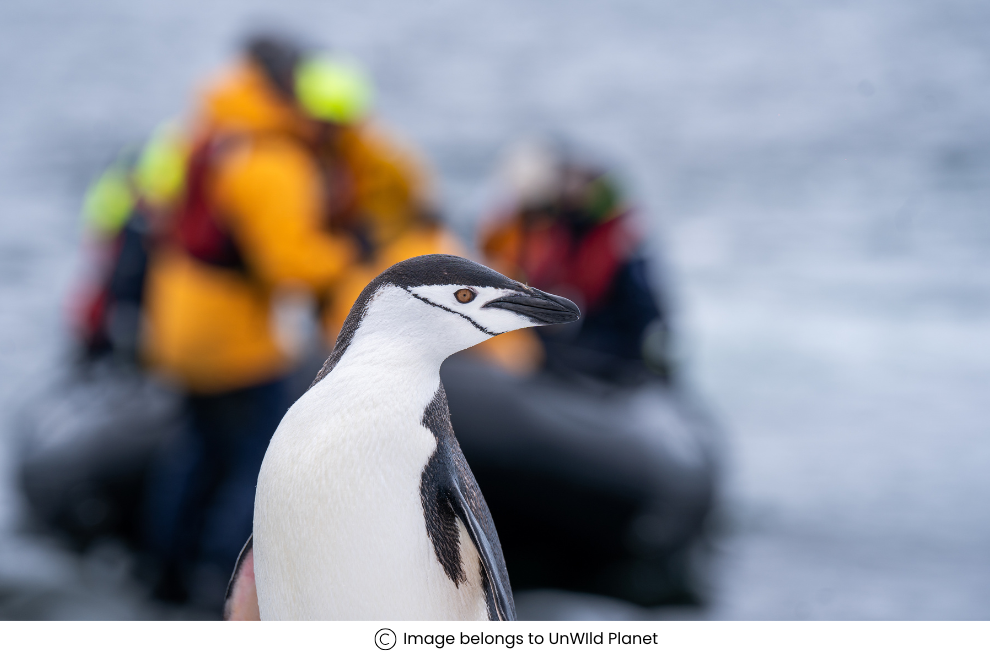
- Witness the Gentoo penguins, thriving in its relatively mildness of the northern tip of Antarctic Peninsula
- If you are looking forward to meeting Adelie penguins, head to Hope Bay in Antarctic Sound, where more than a lakh of their breeding pairs call this home
- As the name goes, Penguin Island is one of the best places to spot penguins, when in Antarctica. This 2km long isle is home to Adelie penguins and gregarious Chinstrap penguins
- King penguins, a rare sighting in your polar journey, can be spotted in South Georgia where they breed in colonies
Rethinking Travel: Respecting Penguin Habitats
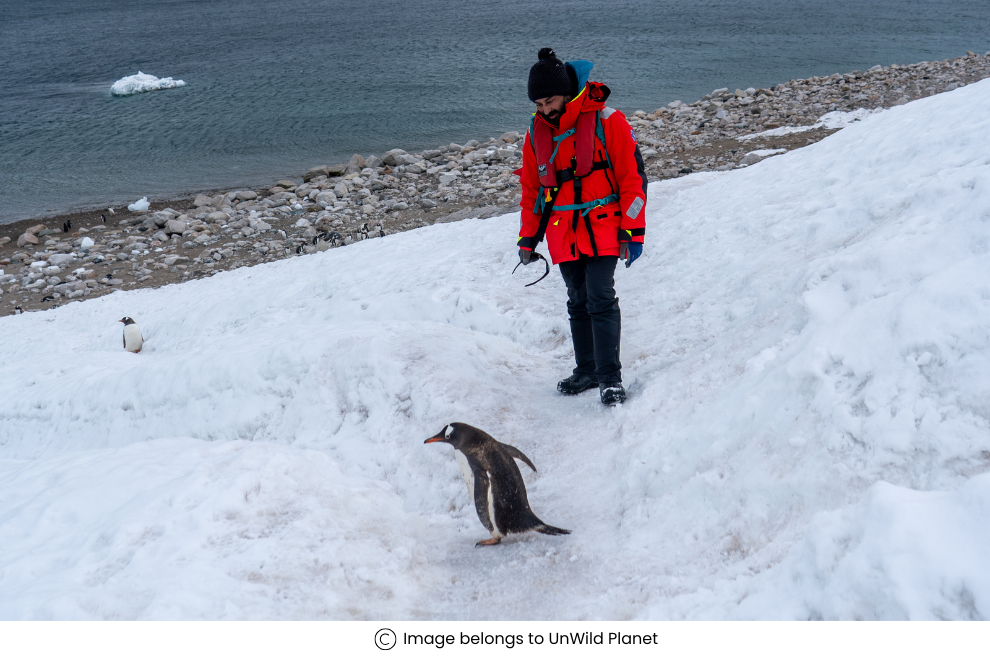
As more people are drawn to the allure of Antarctica and its wildlife, it’s essential to travel mindfully and respect the delicate balance of these ecosystems. Penguins, especially during breeding and molting seasons, are vulnerable to disturbances. When visiting their habitats, travelers should keep a respectful distance, follow guidelines set by conservation organizations, and choose Antarctica tour operators committed to minimizing human impact.
How Are We Rethinking Travel in Antarctica:
- Visitor Limits:
Strict regulations control the number of visitors at specific landing sites, limiting ecological damage. Ships with more than 500 passengers are not permitted to land.
- Wildlife Protection:
Safety distance protocols are enforced - visitors must maintain at least 5 meters from wildlife and refrain from any contact.
- Waste Management:
Comprehensive waste protocols ensure no trace is left behind. Visitors are required to bring reusable items and follow stringent washing procedures for shoes, clothes, and gear to prevent non-native species introduction.
- Site-Specific Protocols:
Visitors adhere to unique guidelines that safeguard fragile ecosystems, including avoiding disturbance to study sites or field camps.
- Educational Briefings:
Pre-visit briefings educate travelers on responsible behavior and environmental awareness, with materials such as IAATO’s Don’t Pack a Pest leaflet.
- Qualified Staff:
Trained personnel oversee adherence to guidelines and ensure visitor safety.
- Emergency Response:
Robust contingency plans prioritize safety and environmental protection in case of emergencies.
By rethinking how we travel, we can ensure that future generations of penguins continue to thrive in their natural home, undisturbed by our presence. Saying so, spotting penguins is something you cannot exclude from your Antarctica itinerary!
There are more exciting spots that you can cover while visiting this southernmost tip. Click here to check out the 6 iconic points in the Antarctic Peninsula and what made them famous.
Ready to embark on your next adventure? Fill out the form below and let our experts curate your dream getaway!
All Fields are mandatory*-
Related Tours
-
Recent Blogs
